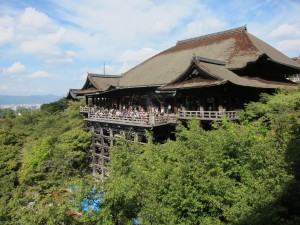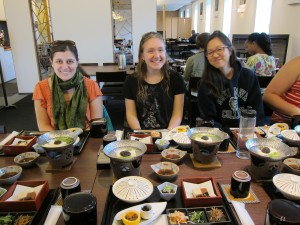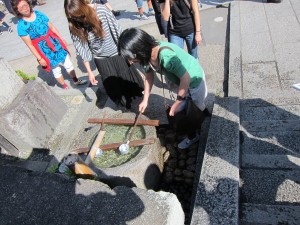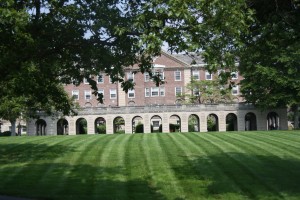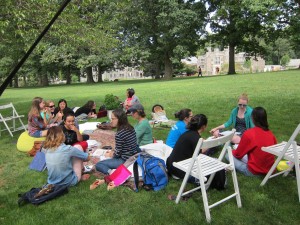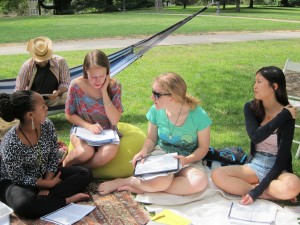We got up a bit after 5:00 am, to walk up to Choin-in up the hill from where we are staying for morning services. It was a rich sound scape, the thunk as we kept the beat for the procession on gourds, the chant, the bells, the sharp clack-clack of the wood blocks, the chirping of the nightingale floor as we moved from one space to another, the ravens cawing in the pre-dawn stillness — and the roar of the motorcycle patrolling the grounds. 
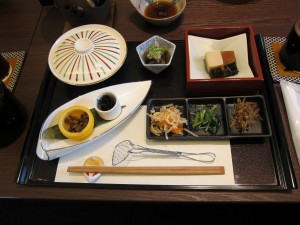 We had a beautiful breakfast at the temple where we are staying. Little dishes of salty and savory tastes, miso soup and rice. And of course, tea.
We had a beautiful breakfast at the temple where we are staying. Little dishes of salty and savory tastes, miso soup and rice. And of course, tea.
From there we went to Kiyumizudera, a temple built next to a beautiful spring and with an amazing view of Kyoto. The streets are crowded with tourists and students, and lots of little shops. It was hot, so the water (mizu) was incredibly refreshing and the sample of cold yuzu honey (yuzu mitsu) drink was amazing. We practiced the ritual of washing your hands and rinsing your mouth at various spots. In my course we have been discussing the body and prayer/meditation. What are the connections between mind and body and the transcendent in different traditions? How do we mark boundaries between dedicated contemplative time and daily life?
We walked through Tainaimeguri – pilgrimage through the womb, a short descent beneath a hall in complete darkness. We’ve talked about James Turrell’s work in my class, about the ways in which light and darkness can be manipulated to change the texture – the set and setting – of a contemplation.
We then went to Honen-in, where we walked through a beautiful moss garden, with many water features and a much quieter spot than Kiyumizudera.
From there we walked up to Ginkakuji, the Silver Pavilion. We walked up and above the temple precincts, looking down on the gardens below. Each view elicits a different reaction.

